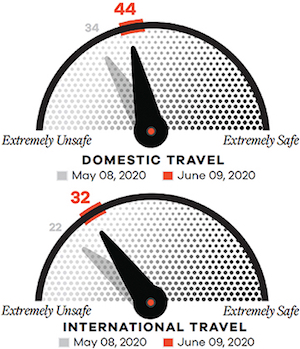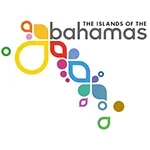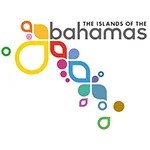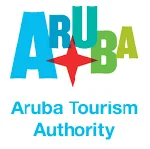 |
| Jennifer Baum |
Just over four months ago, the world endured a tailspin that some of us saw coming but none imagined would take over so quickly. Our beloved hospitality industry has been decimated, leaving thousands of committed employees without jobs and the future on shaky ground. Restaurants and bars closed. Hotels shuttered. And our world morphed into something unfamiliar.
These are unprecedented, challenging times, words we hear more often than we’d like but true nonetheless. The world has changed, and the hospitality and travel industry has been enormously affected. This is the new normal, if you can even use the word “normal.”
But hospitality is evolving and flexibility is key in order to be successful, especially in the immediate future. In recent months, we’ve seen businesses adapt to stay relevant during the Coronavirus pandemic. Hotels opened their doors to healthcare workers and patients, restaurants and chefs created care packages for those in need, and various fashion and hospitality brands adapted their business to make PPE masks when there was a shortage. In June, our agency also pivoted to offer three new services to better serve the needs of our hospitality colleagues and to help navigate the road ahead.
Now, as the world starts to reopen and we navigate each day and each new challenge that comes with this process, it’s more important than ever to ...
| This article is featured in O'Dwyer's Jul. '20 Travel & Int'l PR Magazine. |
 Source: MMGY Global Travel Safety Barometer; June 2020 Source: MMGY Global Travel Safety Barometer; June 2020 |
Prioritize PR: Often during times of crisis, budgets are tightened, and PR is the first to be cut or downsized. However, this is precisely the time when your communications team is needed the most. Restoring and strengthening your brand’s image by communicating with the press, crafting messaging to past guests, connecting with key partners, as well as developing internal lines of communications for staff and sales teams is essential.
Share health and safety standards: Travelers are ready to pack their bags and get back out there, but they need to be reassured that their health and safety are just as important to you as it is to them. Any and all new health and hygiene protocols should be listed clearly on your website so potential guests can easily find the information they need when booking. Language should be approachable, clear and easy to understand. If corporate brand guidelines aren’t readily available, follow local/state templates as needed.
Stay nimble in static times: If you’re unable to operate at full capacity, take a step back and identify areas where you have flexibility to adapt and be creative. Oftentimes, especially in hotels, food and beverage departments offer the opportunity to pivot business models and create unexpected revenue streams, as we’ve seen recently with to-go cocktails and take out only service offerings. Other great ways to think outside the box include transforming parking lots into beer gardens until indoor dining is allowed; offering hotel rooms at a special rate to be used as individual office spaces; expanding in-room services; and even pop-up burger bars or food trucks that bring the dining experience outside the hotel’s walls.
Align with local partners: Taking care of others is what we do in the hospitality industry and one major lesson that we learned from this pandemic is that we’re “in this together.” That includes the recovery phase. I’ll likely say this more than once, but your local community is your most important asset whether you’re in crisis or not. When you support your community in a time of need, they will support you. Align with local partners and consider creating an overarching recovery campaign to win back consumer trust, increase audience reach and reinforce “open for business” messaging.
Get social: Maintaining a consistent social media presence and using it to communicate timely news and updates to consumers is an important step in engaging followers pre- and post-reopening. Your content can entertain and be informative: use it to show, not tell, what your brand and team are doing behind the scenes while you’re not fully reopened (e.g. at-home cooking/cocktail demos, a short wellness session featuring yoga and meditation). Highlight what social distancing measures and hygienic practices you’re implementing to ensure guests’ safety. What can people expect from the arrival process? You can even share old photos and video content to remind and inspire people while they make plans to travel to your destination once things get settled. It’s also important to give thanks to your supporters and community whenever you can and your social media channels provide a great platform to do just that.
Maintain your relationships with influencers and content creators: While you may not have the same budget to work with paid influencers as you did before, this is a good time to tap into existing relationships and strengthen those ties. Keeping your digital network informed and ahead of the news, while also engaging feedback when applicable, creates a brand loyal community that will later be more willing to help amplify and share news on your behalf. There is also an opportunity to establish an affiliate relationship with these like-minded brands to swap content and leverage each other’s audiences.
Adjust your focus on your immediate community: As you start to reopen, your biggest ally—and the first segment of business to come back—will be your local community. This group of local residents, press, influencers and partners should be the first you reach out to with reopening info and the first to be welcomed back on property. Also, where and when you can, continue to give back through charities, volunteering as well as providing local incentives and promotions to show your loyalty and support during troubling times.
Incentivize guests: Travel now poses a clear risk due to required transportation and potential for exposure. In order for guests to be inclined to travel, they need to see an added incentive when booking, such as a value-add or package deal. These types of perks may include a free upgrade to a villa when booking one of the property’s suites, or a travel package inclusive of F&B, spa, valet and activity offerings.
Offer private experiences: From aviation to villas, as well as dining and other experiences, privacy is going to be the most coveted amenity in the immediate future for travelers. Make privacy a priority and get creative with both programming and space. If you don’t currently have private villas or dining rooms, try transforming unexpected locations into secret hideaways that travelers and guests could rent out for an afternoon or day, with added-value services to help attract clientele and boost revenue (e.g., transform an unused event terrace typically booked for cocktail events or weddings into an escape space with a fully loaded cabana and butler service).
Recognize new business sources: Unfortunately, for the immediate future, gone are the days of the quick cheap flight and the last-minute jet-set. As travelers pivot their focus away from air travel for the immediate future, they’re redefining their idea of “local” and seeing longer road trips as a way to expand their travel experience. This gives travel brands a unique opportunity to reimagine where their “drive markets” are, and expand their outreach to include more states, towns and cities. And with more time spent behind the wheel, the resurgence of the radio will be a great way to meet people where they are. A powerful radio ad or radio show appearance can either help persuade people to add a stop on their planned journey or help inspire them to plan future farther flung trips as they get a taste for travel again.
As we continue to move through reopening phases and travel rebuilds, there are still a lot of unknowns, and things can—and will—change in an instant. But uncertainty doesn’t mean you can’t have a strategy in place, so long as it’s nimble and adaptable. With a plan, you’ll be ready to welcome wanderlusters in no time.
***
Jennifer Baum is president and founder of Bullfrog + Baum.


 Weber Shandwick is providing PR and marketing communications services to the Moroccan National Tourist Office in New York.
Weber Shandwick is providing PR and marketing communications services to the Moroccan National Tourist Office in New York. Finn Partners has filed its six-month contract with the Bahamas Ministry of Tourism, Investments & Aviation, which is worth $240K.
Finn Partners has filed its six-month contract with the Bahamas Ministry of Tourism, Investments & Aviation, which is worth $240K. Weber Shandwick wrapped up its work for the Ministry of Bahamas at the end of 2023.
Weber Shandwick wrapped up its work for the Ministry of Bahamas at the end of 2023. The Aruba Tourism Authority is boosting its budget 29.4 percent to $2.2M at Zeno Group, according to its 2024 contract, effective Jan. 1.
The Aruba Tourism Authority is boosting its budget 29.4 percent to $2.2M at Zeno Group, according to its 2024 contract, effective Jan. 1. As inflation continues to impact spending, consumers are revisiting their list of what they’re willing to spend more of their money on. Luckily for those in the travel industry, experiences seem to be trending up on the “splurge” list.
As inflation continues to impact spending, consumers are revisiting their list of what they’re willing to spend more of their money on. Luckily for those in the travel industry, experiences seem to be trending up on the “splurge” list. 


 Have a comment? Send it to
Have a comment? Send it to 
No comments have been submitted for this story yet.